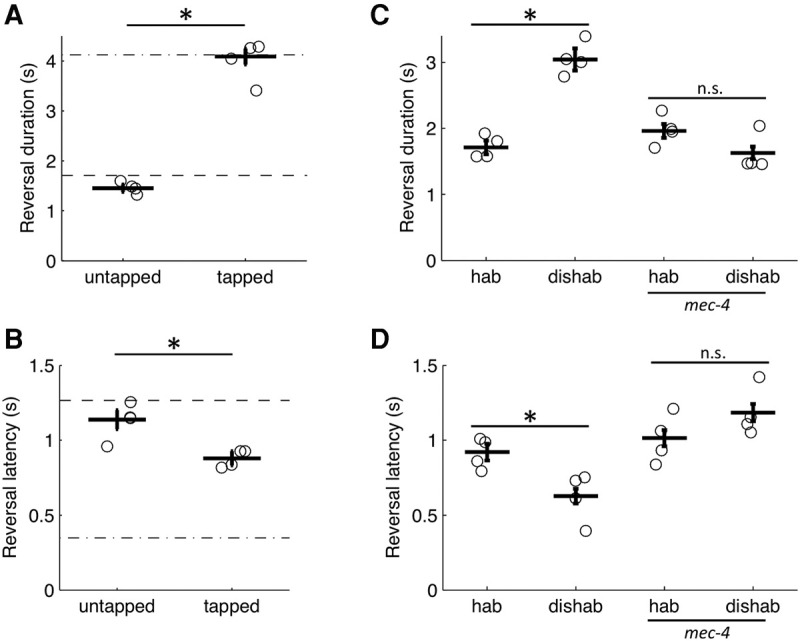Figure 5.

Sensory input from body touch receptors acts as a dishabituating cue. (A) Tap after training reversed the change in response (A) duration and (B) latency associated with repeated ASH activation. The dash-dot line is the initial response level and the dashed line is the habituated response level. (C,D) Habituated responding of a touch insensitive mec-4 mutant was not reversed by tap. Duration (C) and latency (D) of the reversal response elicited by the final 2-sec light pulse of training (hab) and after a dishabituating tap (dishab). Circles are plate means, crosses are population means ± SEM (n = 4 plates), asterisks denote statistically distinguishable groups, and (n.s.) no significant difference. All data collected using the ljIs105 ChR2 transgene.
